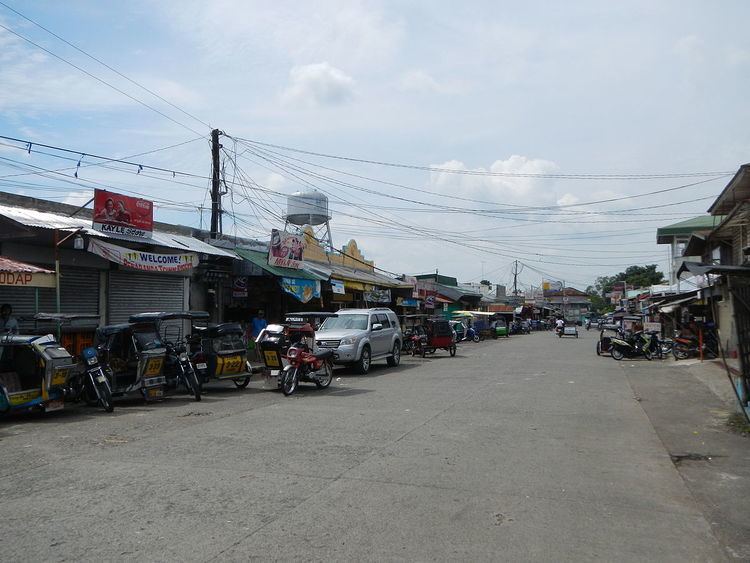Country Philippines Barangays ZIP code 3103 Province Nueva Ecija Local time Thursday 1:27 AM | District 4th District Time zone PST (UTC+8) Area 95 km² Population 27,410 (2010) Dialling code 44 | |
 | ||
Region Central Luzon (Region III) Weather 25°C, Wind NW at 5 km/h, 77% Humidity | ||
Peñaranda is a fourth class municipality in the province of Nueva Ecija, Philippines. According to the 2010 census, it has a population of 27,410 people.
Contents
Map of Penaranda, Nueva Ecija, Philippines
It is bordered by municipalities of General Tinio and San Leonardo and the city of Gapan.
The area was originally called Mapisong, and it was a part of the municipality of Gapan. The area was organized into a municipality by José Maria Peñaranda, a Spanish engineer, and subsequently named after him.
Peñaranda was once known for its high quality crop called ikmo, a plant used by older Filipinos as a chewing substance. Recently however, the crop is on the brink of extinction. Rice remains a flourishing farm produce.
Barangays
Peñaranda is politically subdivided into 10 barangays.
World War II
In December 1941, Japanese fighter and bomber planes were found invading the town municipalities of Peñaranda during the Japanese Invasion. In 1942, the Japanese Occupation forces entered Peñaranda, Nueva Ecija. Military general headquarters, garrisons and concentration camps of the Imperial Japanese Armed Forces were built and established in the town municipality.
In 1942 to 1945, the Hukbalahap Communist group and local guerrilla groups ambushed the municipal town in Peñaranda and attacked the Japanese. However, the guerrillas and Hukbalahap Communists groups were unsuccessful and they retreated from the Japanese. Upon the arrival of the local Filipino troops and officers of the Philippine Commonwealth Army units, the municipal town was liberated from the Japanese forces.
In 1945, entering to the Philippine Commonwealth Army troops of the 2nd, 21st, 22nd, 23rd, 25th and 26th Infantry Division of the Philippine Army took in Peñaranda, Nueva Ecija together with the local recognized guerrilla units and Hukbalahap Communist fighters we fronted the battles against the Japanese troops by defeated from successful to the Philippine troops and recognized guerrillas beginning the Invasion of Peñaranda during World War II.
Events
Every May, Peñaranda residents stage a musical drama called "Araquio", a re-enactment of Christians' quest led by Queen Helena and King Constantine for the Holy Cross where Jesus Christ was nailed. Actors and actresses garbed in colorful and cute costumes dramatize this century old tradition which features sword fights between the Christians and Moors.
Peñaranda is also known for its mouth-watering, native rice cakes such as espasol, putong puti and sapin-sapin .
